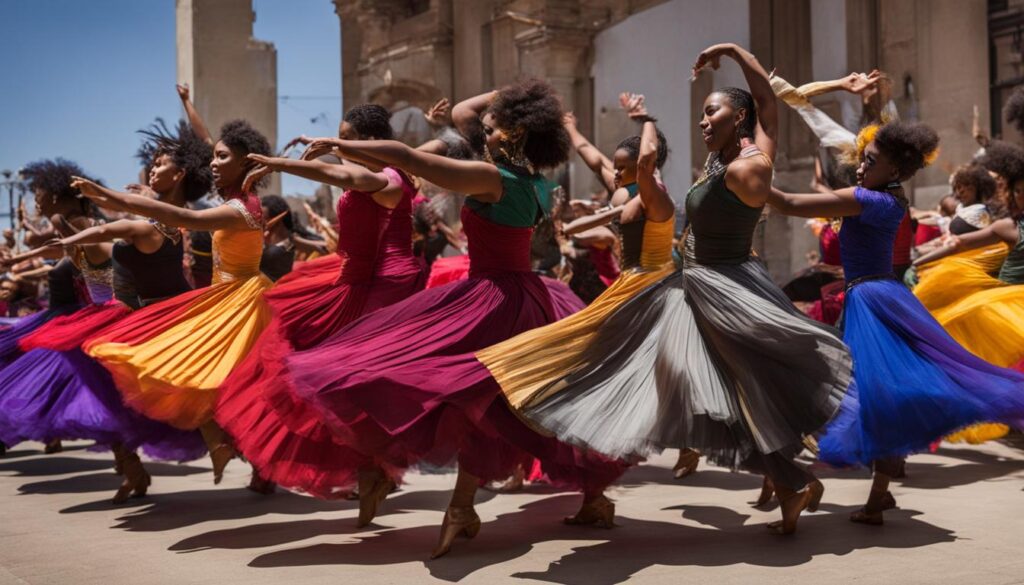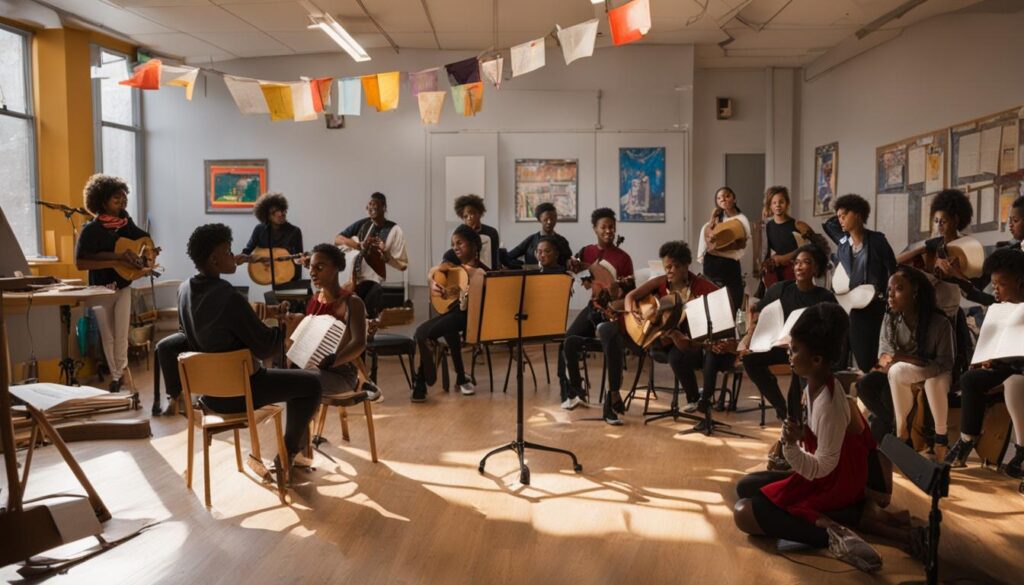Welcome to this exciting article where we delve into the enchanting world of performing arts. If you’ve ever wondered about the different types of performances that captivate audiences, you’re in for a treat! In this section, we’ll explore the three major categories of performing arts – music, dance, and theatre. So, let’s dive in and explore the diverse and thrilling world of performing arts!
Key Takeaways:
- The three major categories of performing arts are music, dance, and theatre.
- Performing arts encompass various disciplines presented live for an audience.
- Theatre combines speech, gesture, music, dance, sound, and spectacle to create performances.
- Dance uses rhythmic and expressive movements to convey emotions and stories.
- Music combines pitch, rhythm, and dynamics to create sound.
Theatre
Theatre is a branch of performing arts that combines speech, gesture, music, dance, sound, and spectacle to create captivating performances. It encompasses various forms such as plays, musicals, opera, ballet, mime, and improvisational theatre. Theatre performances can be held in purpose-built theatres, opera houses, open-air stages, or even in unconventional venues. The diverse genres of theatre cater to different tastes and preferences, ranging from classical tragedies to contemporary experimental works.
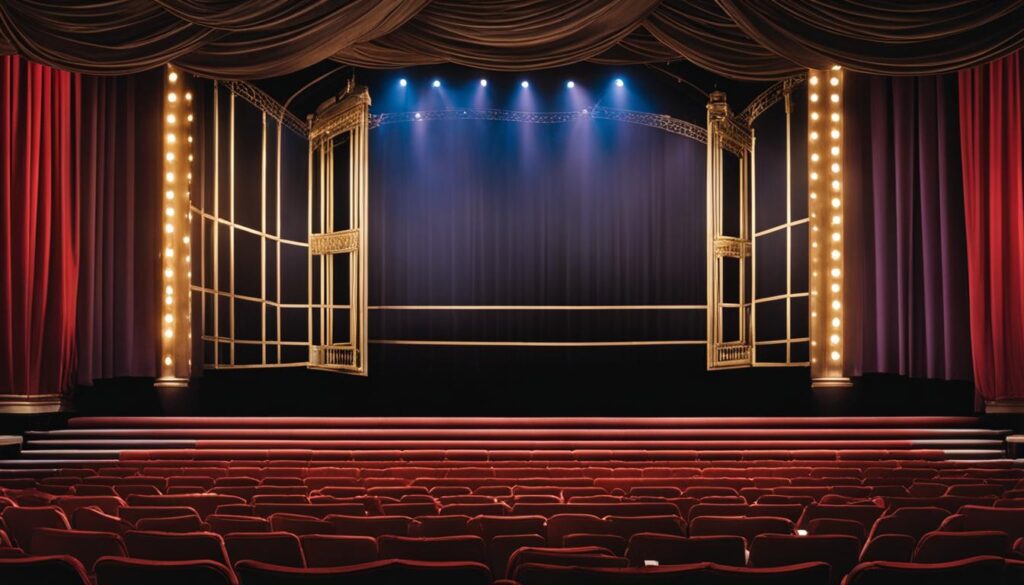

One of the unique aspects of theatre is its ability to engage audiences through storytelling and artistic expression. The combination of live performances, vivid characters, and evocative narratives creates a powerful experience that resonates with spectators. Theatre allows actors to embody different roles, exploring the depths of human emotions and challenging societal norms. It serves as a platform for social commentary, cultural exploration, and personal reflection. Whether it’s a grand musical production or an intimate one-person show, theatre has the power to transport audiences to different worlds and provoke thought and introspection.
Theatre genres span across centuries and cultures, showcasing the rich tapestry of human creativity and imagination. From the classical tragedies of ancient Greece and the poetic dramas of Shakespeare to the avant-garde experiments of contemporary theatre, there is something for everyone. As a dynamic art form, theatre continues to evolve and push boundaries, embracing new technologies, storytelling techniques, and social themes. It remains a significant component of the performing arts, captivating audiences with its ability to entertain, inspire, and challenge.
Table: Theatre Genres
| Genre | Description |
|---|---|
| Tragedy | A serious play that explores themes of human suffering and the struggle for meaning. |
| Comedy | A lighthearted play that aims to make the audience laugh and provides humorous commentary on society. |
| Musical | A theatrical performance that combines spoken dialogue, music, and dance to tell a story. |
| Experimental | A non-conventional form of theatre that pushes boundaries, challenges traditional storytelling methods, and explores new ideas. |
| Ballet | An elegant dance form characterized by precise movements, graceful gestures, and expressive storytelling. |
Dance
Dance is a captivating and expressive form of performing art that delights audiences with rhythmic and graceful movements. It encompasses a wide range of styles and genres, each with its own unique characteristics and cultural influences.
One of the most well-known forms of dance is ballet, which originated in Renaissance Italy and later developed into a highly technical and elegant art form. Ballet dancers undergo years of rigorous training to master their technique and perform intricate choreography with precision and grace. Other popular dance genres include tap, jazz, hip-hop, and contemporary dance, each offering its own distinct style and movement vocabulary.
Dance performances are often accompanied by music, which adds depth and emotion to the movements on stage. The fusion of music and dance creates a powerful sensory experience that captivates and moves audiences. Whether it’s a classical ballet or a high-energy hip-hop routine, dance has the ability to evoke strong emotions and tell stories without words.
“Dance is the hidden language of the soul.” – Martha Graham
Types of Dance
Here are some examples of different types of dance:
- Ballet: A classical dance form characterized by grace, precision, and fluidity of movement.
- Tap: A percussive dance style that involves creating rhythms and sounds by striking the floor with metal taps on the shoes.
- Jazz: A lively and energetic dance style that combines elements of ballet, African dance, and social dance.
- Hip-hop: A street dance style that emerged from the hip-hop music culture, characterized by dynamic movements, isolations, and improvisation.
- Contemporary: A modern dance style that blends elements of ballet, jazz, and other dance forms to create expressive and innovative choreography.
These are just a few examples, as dance is a constantly evolving art form with endless possibilities for creativity and self-expression. Whether it’s a classical ballet performance or a groundbreaking contemporary piece, dance continues to captivate audiences and inspire artists around the world.
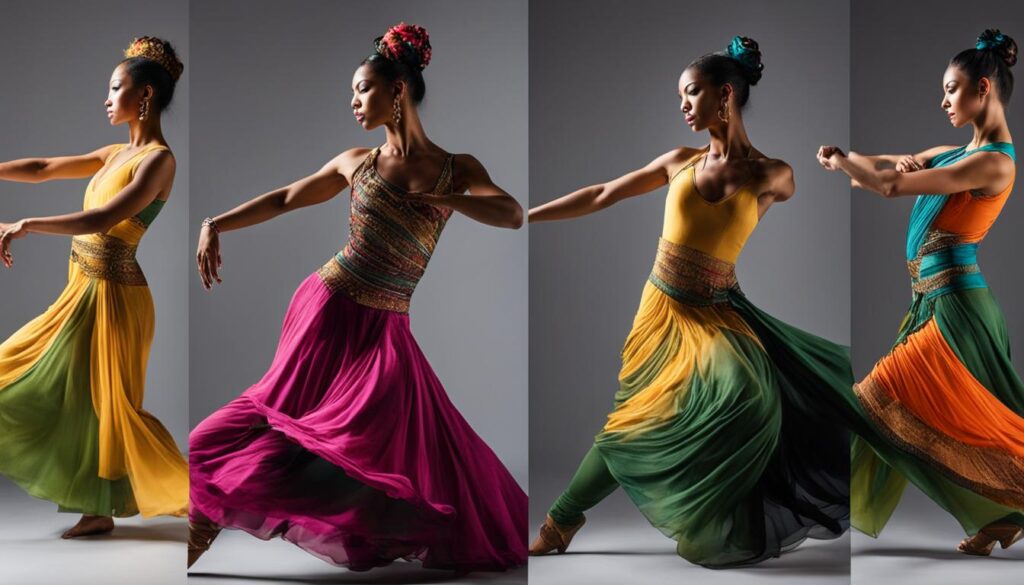

| Dance Genre | Description |
|---|---|
| Ballet | A classical dance form characterized by grace, precision, and fluidity of movement. |
| Tap | A percussive dance style that involves creating rhythms and sounds by striking the floor with metal taps on the shoes. |
| Jazz | A lively and energetic dance style that combines elements of ballet, African dance, and social dance. |
| Hip-hop | A street dance style that emerged from the hip-hop music culture, characterized by dynamic movements, isolations, and improvisation. |
| Contemporary | A modern dance style that blends elements of ballet, jazz, and other dance forms to create expressive and innovative choreography. |
Music
Music is a universal form of performing art that has the power to captivate and move audiences. It encompasses a wide range of genres and styles, each with its own unique characteristics and instruments. From classical symphonies to catchy pop tunes, music has the ability to evoke emotions, tell stories, and bring people together.
There are various types of music that cater to different tastes and preferences. Some popular genres include classical, jazz, rock, hip-hop, and country. Each genre has its own distinctive sound and style, making it accessible to a wide range of listeners. Music performances can take many forms, from intimate solo concerts to large-scale orchestras and bands.
Music has the power to move people in ways that words alone cannot. It has the ability to transcend language barriers and connect people from different cultures and backgrounds.
One of the fascinating aspects of music is the diverse range of musical instruments used to create beautiful melodies and harmonies. From the grand piano to the electric guitar, each instrument brings its own unique sound to the music. Musicians spend years honing their craft and mastering their chosen instrument, creating a deep connection between the player and their music.
Music is not only a form of entertainment but also a means of self-expression and communication. It has the ability to convey emotions and stories, allowing artists to share their experiences with the world. Whether it’s a symphony, a rock concert, or a jazz improvisation, music has the power to transport listeners to another world, evoking feelings of joy, sadness, excitement, and everything in between.
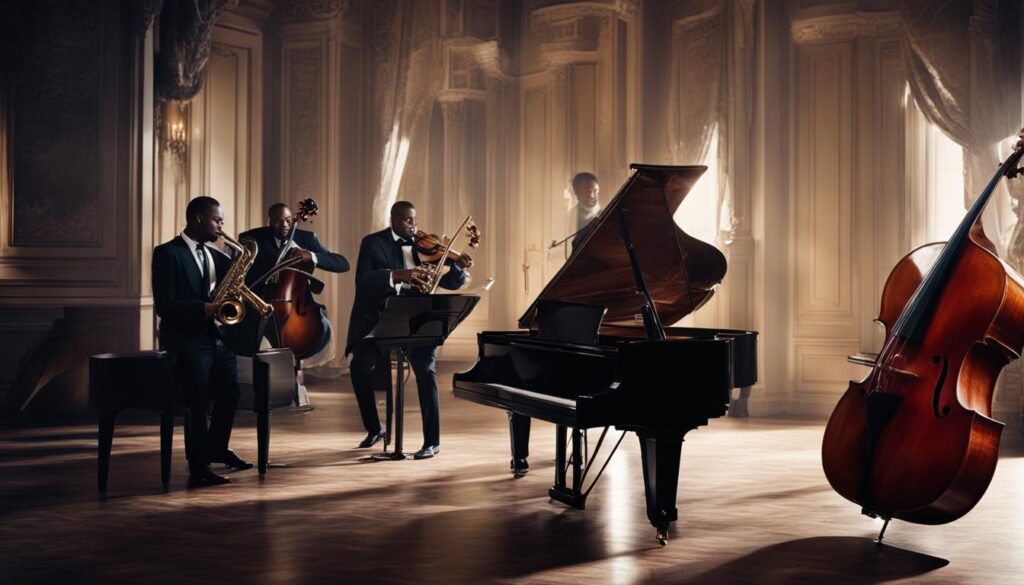

Types of Music
When it comes to music, there is a vast array of genres and styles to explore. Here are some of the most popular types of music:
- Classical: Known for its rich compositions, classical music encompasses works from famous composers like Beethoven, Mozart, and Bach.
- Jazz: Originating from African American communities in the United States, jazz is characterized by improvisation and syncopated rhythms.
- Rock: A genre that emerged in the 1950s, rock music is known for its energetic beats, distorted guitars, and powerful vocals.
- Hip-hop: Born out of the Bronx in the 1970s, hip-hop is characterized by its rhythmic spoken lyrics and electronic beats.
- Pop: Pop music is known for its catchy melodies, upbeat rhythms, and relatable lyrics.
- Country: Country music celebrates American rural and western traditions, often featuring storytelling lyrics and acoustic instruments like the guitar and fiddle.
These are just a few examples of the many genres and styles of music that exist. Whether you prefer classical symphonies, head-banging rock anthems, or soulful jazz melodies, there is a type of music out there that is sure to resonate with you.
Music Performances
Music performances can take many forms, from small intimate gatherings to large-scale concerts. Here are some popular types of music performances:
- Solo Performances: One musician or vocalist takes the stage and showcases their talent.
- Ensemble Performances: A group of musicians or vocalists perform together, creating harmonies and showcasing their musical chemistry.
- Orchestral Performances: An orchestra, consisting of various instruments and sections, performs classical or symphonic music.
- Band Performances: A group of musicians, often playing guitars, drums, and other instruments, perform songs from various genres.
- Live Concerts: Popular musicians or bands perform for a large audience in concert halls, arenas, or outdoor venues.
Music performances are not only a way for musicians to showcase their talents but also a means for audiences to connect with the music on a deeper level. Whether it’s the excitement of seeing your favorite band live or the emotional journey of a classical symphony, music performances have the power to create unforgettable experiences.
Importance of Performing Arts
The performing arts play a vital role in society, fostering cultural expression, creativity, and self-expression. Engaging in performing arts allows individuals to explore and express their emotions, thoughts, and perspectives through various artistic mediums such as music, dance, and theatre.
Participating in the performing arts encourages individuals to think creatively, problem-solve, and innovate. It provides an outlet for personal expression and allows individuals to develop their unique voices and perspectives. Whether it’s writing a play, composing a song, or choreographing a dance, the performing arts offer a platform for free expression and creativity.
“Performing arts offer a platform for free expression and creativity.”
Furthermore, the performing arts serve as a means of cultural expression, preserving and showcasing the heritage and traditions of different communities. Cultural performances, such as traditional dances or indigenous music, not only entertain but also educate and foster a sense of identity and pride among individuals and communities.
Studies have also shown that participating in the performing arts has numerous benefits beyond creative and cultural expression. It has been linked to improved academic performance, enhanced communication skills, and increased self-confidence and self-esteem. By engaging in collaborative artistic projects, individuals develop teamwork and leadership skills, learning to work together towards a common goal.
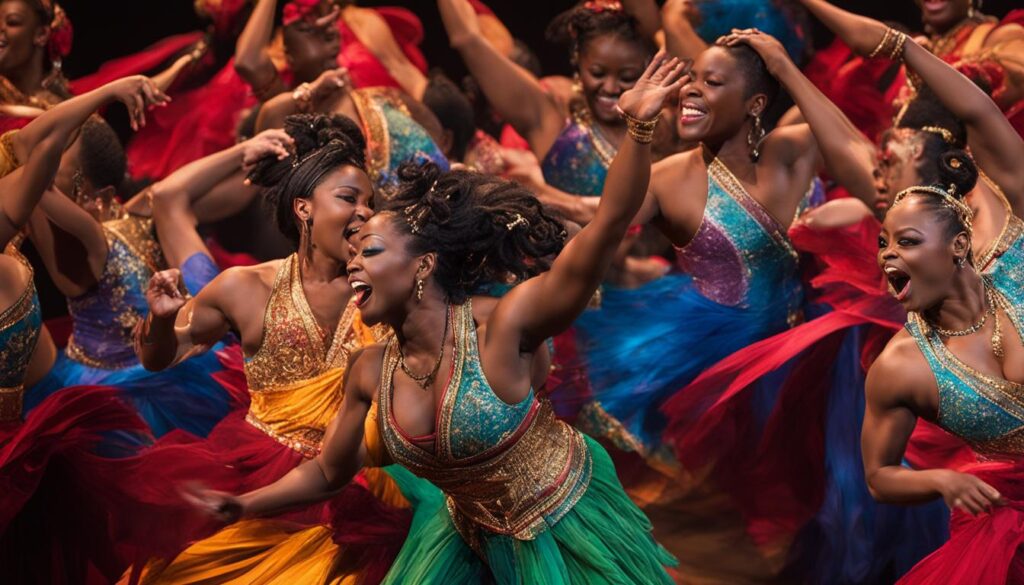

The Benefits of Performing Arts:
- Enhances creativity and self-expression
- Promotes cultural preservation and diversity
- Improves academic performance
- Develops communication and collaboration skills
- Boosts self-confidence and self-esteem
By recognizing the importance of performing arts, society can support the development and accessibility of performing arts training and infrastructure. This ensures that future generations have opportunities to engage in and enjoy these art forms, preserving their cultural significance for years to come.
Conclusion
In conclusion, the performing arts encompass three major categories: theatre, dance, and music. Theatre combines acting, music, and storytelling to create captivating performances that engage and entertain audiences. Dance utilizes rhythmic movements and body language to convey emotions, stories, and character traits. Music, on the other hand, combines pitch, rhythm, and dynamics to create beautiful sounds that have the power to shape human behavior and emotions.
Participating in the performing arts not only provides a platform for creativity and self-expression but also encourages cultural exchange and appreciation. It allows individuals to think creatively, develop unique voices, and explore different cultures. Moreover, studies have shown that engagement in performing arts can enhance academic performance and improve communication skills.
Beyond the personal benefits, the performing arts hold immense value for society and culture. They attract tourists, generate revenue, and preserve cultural heritage and traditions. Safeguarding measures are crucial for the preservation and promotion of these art forms for future generations.
FAQ
What are the 3 major categories of performing arts?
The 3 major categories of performing arts are theatre, dance, and music.
What is theatre?
Theatre is a form of performing art that involves acting out stories in front of an audience, combining speech, gesture, music, dance, sound, and spectacle.
What is dance?
Dance is a form of performing art that involves rhythmic and expressive movements performed to music, conveying emotions, stories, and character traits through physical gestures and body language.
What is music?
Music is a universal form of performing art that combines pitch, rhythm, and dynamics to create sound, performed using various instruments and styles.
Why are performing arts important?
Performing arts provide a platform for creativity, self-expression, and cultural exchange. They have numerous benefits, including academic improvement, confidence-building, and a sense of community.
What is the summary of the 3 major categories of performing arts?
The 3 major categories of performing arts are theatre, dance, and music. They encompass various disciplines and offer opportunities for creativity, expression, and cultural exchange.
